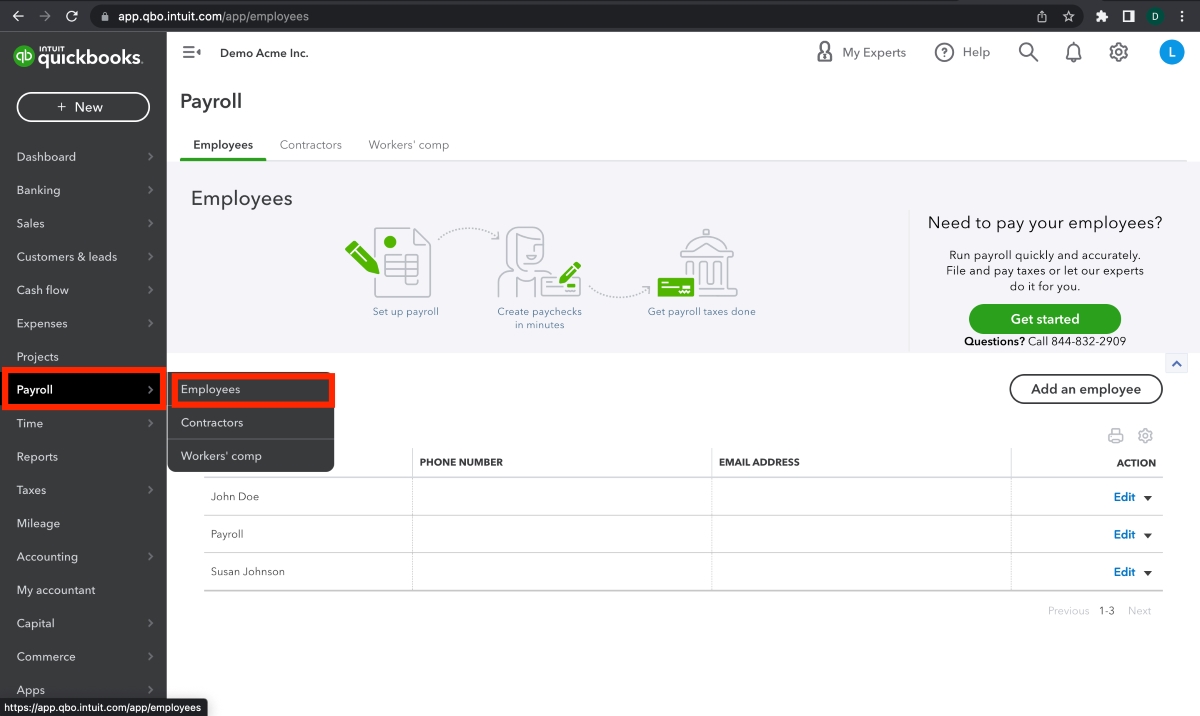

Finance
What Is An Investment Policy Statement?
Published: October 18, 2023
Learn what an investment policy statement is and why it is crucial in finance. Gain insights into creating a solid investment plan for long-term financial success.
(Many of the links in this article redirect to a specific reviewed product. Your purchase of these products through affiliate links helps to generate commission for LiveWell, at no extra cost. Learn more)
Table of Contents
Introduction
When it comes to managing your finances, having a clear investment strategy is key to achieving your financial goals. An Investment Policy Statement (IPS) is a crucial tool that provides a roadmap for your investment decisions. Think of it as a guiding document that outlines your objectives, risk tolerance, asset allocation, and other important considerations.
An IPS serves as a foundation for making informed and disciplined investment choices. It helps you stay focused on your long-term goals and prevents emotional decision-making during market volatility. Whether you are an individual investor or an institutional investor, having an IPS in place can provide a sense of structure and discipline to your investment process.
In this article, we will delve into the nitty-gritty details of an Investment Policy Statement, exploring its definition, purpose, components, and why it is so essential for successful investing.
So, if you’re ready to take control of your financial future and make strategic investment decisions, let’s dive in and learn all about Investment Policy Statements.
Definition of an Investment Policy Statement (IPS)
An Investment Policy Statement (IPS) is a formal document that outlines the guidelines and objectives for managing an investment portfolio. It serves as a written agreement between the investor and the investment advisor or portfolio manager, providing a framework for decision-making and accountability.
The IPS acts as a compass, guiding the investor’s investment strategy by clearly defining their goals, risk tolerance, and expectations. It serves as a reference point for making investment decisions and provides a benchmark against which the performance of the portfolio can be evaluated.
At its core, an IPS establishes a clear understanding between the investor and the portfolio manager regarding the investment approach and philosophy. It helps align the investor’s objectives with the investment strategies employed and sets expectations for performance and communication.
An effective IPS will typically include the following components:
- Investment Objectives: Clearly defined financial goals that the investor seeks to achieve through the investment portfolio. These may include objectives like capital preservation, income generation, growth, or a combination.
- Risk Tolerance: An assessment of the investor’s ability and willingness to withstand fluctuations in the value of the investment portfolio. This helps in determining the suitable asset allocation and investment strategies.
- Asset Allocation Guidelines: The percentage allocation of the investment portfolio across different asset classes such as stocks, bonds, cash, and alternative investments. This allocation is designed to achieve a balance between risk and return based on the investor’s objectives and risk tolerance.
- Investment Guidelines and Restrictions: Any specific requirements or restrictions that the investor wants to impose on the investment portfolio. These may include limitations on certain industries, sectors, or types of investments.
- Performance Benchmarks: Specific benchmarks or indices against which the performance of the investment portfolio will be measured. This helps in evaluating the success of the investment strategy and making necessary adjustments.
- Monitoring and Review Process: A plan for regularly monitoring the performance of the investment portfolio and conducting periodic reviews to ensure that it remains aligned with the investor’s goals and objectives.
An IPS is not a static document but rather a dynamic one that should be regularly reviewed and updated as circumstances and goals change.
Now that we have defined what an Investment Policy Statement is, let’s discuss why it is important and how it benefits investors.
Purpose and Importance of an IPS
The purpose of an Investment Policy Statement (IPS) is to provide clarity, structure, and discipline to the investment process. It serves as a guiding document that ensures investment decisions are aligned with the investor’s goals, risk tolerance, and investment philosophy.
One of the key importance of an IPS is that it helps investors stay focused on their long-term objectives. By clearly defining investment goals and expectations, the IPS acts as a constant reminder of what the investor is trying to achieve. This helps prevent impulsive decision-making during market fluctuations and keeps investors committed to their investment strategy.
Moreover, an IPS helps align the investor’s objectives with the strategies employed by the portfolio manager or investment advisor. It acts as a contractual agreement that establishes a common understanding between the investor and the manager. This can help build trust and ensure that the investment decisions are in line with the investor’s preferences and risk profile.
An IPS also plays a crucial role in managing risk. By assessing the investor’s risk tolerance and establishing asset allocation guidelines, the IPS helps create a diversified portfolio that balances the desired level of risk and return. It provides a framework for making informed decisions regarding the appropriate mix of stocks, bonds, cash, and other asset classes.
Furthermore, an IPS serves as a benchmark for evaluating the performance of the investment portfolio. By setting performance benchmarks or indices, the investor can assess whether the portfolio is meeting expectations and delivering the desired returns. If necessary, adjustments can be made to the investment strategy to improve performance and align with the investor’s objectives.
Another important aspect of an IPS is its role in enhancing communication and accountability. By having a written document that clearly outlines the investment approach, expectations, and monitoring process, both the investor and the portfolio manager have a reference point for discussions and updates. This helps build a transparent and collaborative relationship between the parties involved.
Overall, an Investment Policy Statement is a vital tool for investors as it provides structure, discipline, and accountability to the investment process. It ensures that investment decisions are aligned with the investor’s goals, risk tolerance, and expectations. By serving as a guiding document, an IPS helps investors stay focused on their long-term objectives, manage risk effectively, and evaluate the performance of their investment portfolio.
Now that we understand the purpose and importance of an IPS, let’s explore its key components in more detail.
Components of an IPS
An Investment Policy Statement (IPS) consists of various components that work together to provide a comprehensive framework for managing an investment portfolio. These components help outline the investor’s goals, risk tolerance, asset allocation guidelines, investment restrictions, performance benchmarks, and the monitoring and review process. Let’s dive into each component in more detail:
- Investment Objectives: The IPS starts by defining the investor’s financial goals. These objectives can vary from capital preservation, income generation, wealth accumulation, or a combination of these. By clearly stating the desired outcomes, the IPS sets the direction for the investment strategy.
- Defining Risk Tolerance: Risk tolerance is a critical component of an IPS as it helps determine the suitable level of risk that an investor is willing to take. It involves an evaluation of the investor’s ability to bear fluctuations in the investment portfolio and their comfort level with market volatility. Understanding risk tolerance helps in designing an appropriate asset allocation and investment approach.
- Asset Allocation Guidelines: Asset allocation refers to the distribution of the investment portfolio across different asset classes such as stocks, bonds, cash, and alternative investments. This component of the IPS defines the percentage allocation to each asset class based on the investor’s objectives and risk tolerance. Asset allocation aims to achieve a balance between risk and return.
- Investment Guidelines and Restrictions: This component outlines any specific requirements or restrictions that the investor wants to impose on the investment portfolio. For example, the IPS might restrict investments in certain industries or sectors due to ethical concerns or limit exposure to specific types of securities. These guidelines and restrictions assist in aligning the investment strategy with the investor’s values and preferences.
- Performance Benchmarks: A crucial aspect of an IPS is the establishment of performance benchmarks or indices. These benchmarks are used to measure the performance of the investment portfolio against a relevant market index or a customized benchmark. Performance benchmarks help evaluate the success of the investment strategy and determine if adjustments need to be made.
- Monitoring and Review Process: Regular monitoring and review of the investment portfolio are crucial to ensure that it remains aligned with the investor’s objectives. This component outlines the frequency and process of reviewing the portfolio, assessing its performance, and making any necessary adjustments. By having a structured monitoring and review process, the IPS helps ensure proactive management of the investment portfolio.
These components of an IPS work together to provide a comprehensive framework for managing investments. By incorporating these elements into the IPS, investors can clearly define their goals, set appropriate risk parameters, establish an asset allocation strategy, create investment guidelines, measure performance against benchmarks, and implement a process for ongoing monitoring and review.
Now that we have explored the components of an IPS, let’s delve into the process of establishing investment objectives.
Establishing Investment Objectives
One of the key components of an Investment Policy Statement (IPS) is establishing clear investment objectives. Investment objectives serve as the guiding principles for the portfolio and provide a framework for investment decision-making. They define what the investor aims to achieve through their investment portfolio, setting the direction and purpose of the investment strategy.
When establishing investment objectives, it is important to consider both short-term and long-term goals. Short-term goals may include generating regular income, while long-term goals could be focused on growth and wealth accumulation for retirement or other specific financial milestones.
Here are some key considerations when establishing investment objectives:
- Time Horizon: The timeframe within which the investor aims to achieve their objectives is a significant factor in determining investment strategies. A longer time horizon may allow for more aggressive growth-oriented investments, while a shorter time horizon may necessitate a more conservative approach focused on capital preservation and income generation.
- Risk Appetite: Understanding the investor’s risk appetite or tolerance is crucial in defining investment objectives. Some investors may be comfortable with higher levels of risk in pursuit of potentially higher returns, while others may prioritize capital preservation and prefer lower-risk investments.
- Income Requirements: If generating regular income is a primary objective, the investment strategy may focus on income-generating assets such as dividend stocks, bonds, or real estate investment trusts (REITs). The target income level should be explicitly stated in the IPS to align investment decisions with this objective.
- Capital Appreciation: For investors seeking growth and capital appreciation, the IPS should outline the desired rate of return or growth target. It could specify a target annual return percentage or a benchmark to measure the success of the portfolio’s growth strategy.
- Diversification: The IPS may emphasize the importance of diversification as an objective. Diversification aims to reduce risk by spreading investments across different asset classes, regions, and sectors. The IPS should outline the desired level of diversification and the allocation ranges for different asset classes.
By clearly defining investment objectives, the IPS ensures that investment decisions are aligned with the investor’s goals and expectations. It serves as a reference point for evaluating the suitability of investment opportunities and helps maintain a disciplined investment approach.
It is important to review and reassess investment objectives periodically. As circumstances change, such as shifts in financial priorities or market conditions, investment objectives may need to be adjusted to reflect new goals or risk appetite. Regular reviews of the IPS can help ensure that it remains relevant and aligned with the investor’s evolving needs and circumstances.
Next, we will explore the component of an IPS that focuses on defining risk tolerance.
Defining Risk Tolerance
Defining risk tolerance is a critical component of an Investment Policy Statement (IPS) as it helps determine the level of risk an investor is willing and able to accept in their investment portfolio. Risk tolerance is a personal attribute and varies from investor to investor.
Risk tolerance is influenced by several factors, including an investor’s financial situation, investment goals, time horizon, and personal comfort with volatility. It is important to assess risk tolerance accurately because it directly impacts the asset allocation and investment strategies that will be employed in the portfolio.
Here are some key considerations when defining risk tolerance in an IPS:
- Financial Capacity: Assessing an investor’s financial capacity to withstand potential losses is essential. This involves evaluating factors such as income stability, existing savings, and available emergency funds. Investors with a higher financial capacity may have a higher risk tolerance as they can bear short-term market fluctuations.
- Investment Goals and Time Horizon: Understanding the investor’s goals and time horizon is crucial in evaluating risk tolerance. Investors with longer time horizons, such as those saving for retirement many years away, may have a higher risk tolerance as they have more time to recover from market downturns. On the other hand, investors with shorter-term goals may prioritize capital preservation and have a lower risk tolerance.
- Comfort with Volatility: Some investors may be more comfortable with market volatility and are willing to accept larger fluctuations in the value of their portfolio. Others may find volatility unsettling and prefer a more conservative approach. Assessing an investor’s emotional response to risk is important in determining their risk tolerance.
- Knowledge and Experience: Investors with a greater understanding of investment principles and experience in financial markets may have a higher risk tolerance. They may be more familiar with the potential risks and rewards associated with different asset classes and investment strategies.
- Investment Objectives: The desired investment objectives play a significant role in determining risk tolerance. Investors with a primary objective of capital preservation may have a lower risk tolerance, whereas those seeking higher returns may be more accepting of risk.
It is crucial to have an open and honest dialogue with the investor when defining risk tolerance. A thorough assessment should be conducted to ensure the IPS accurately reflects the investor’s risk tolerance. This assessment can involve questionnaires, discussions about previous investment experiences, and detailed conversations about financial goals and concerns.
Once risk tolerance is defined, it can inform the asset allocation decisions within the IPS. A higher risk tolerance may result in a higher allocation to equities and riskier assets, while a lower risk tolerance may lead to a greater focus on fixed income and more conservative investments.
It is important to note that risk tolerance may change over time due to various factors such as changes in financial circumstances, investment experience, or shifts in investment goals. Regular reassessment of risk tolerance and updating the IPS accordingly is crucial to ensure that the investment strategy aligns with the investor’s changing risk profile.
Next, we will explore the component of an IPS that focuses on asset allocation guidelines.
Asset Allocation Guidelines
Asset allocation is a crucial component of an Investment Policy Statement (IPS) as it defines the allocation of the investment portfolio across different asset classes. Asset allocation refers to the distribution of investments across various categories such as stocks, bonds, cash, and alternative investments. Determining the appropriate asset allocation is a key factor in achieving the desired risk and return objectives of the investor.
Asset allocation guidelines in an IPS outline the target allocation ranges or percentages for each asset class. The allocation should be based on the investor’s goals, risk tolerance, investment horizon, and investment beliefs. Here are some important considerations when defining asset allocation guidelines:
- Investment Objectives: The desired investment objectives of the investor play a significant role in determining the asset allocation. For example, if the primary objective is capital preservation, the IPS may prescribe a higher allocation to more conservative asset classes, such as cash and bonds.
- Risk Tolerance: The investor’s risk tolerance is a crucial factor in determining the asset allocation. An investor with a higher risk tolerance may have a greater allocation to equities or riskier assets, while a more conservative investor may allocate a larger portion of their portfolio to fixed-income securities.
- Investment Horizon: The time horizon of the investor’s financial goals influences the asset allocation. Longer-term goals may allow for a higher allocation to riskier assets such as equities, which have the potential for higher returns over the long term. Shorter-term goals may require a more conservative allocation to preserve capital.
- Investment Beliefs: The investor’s beliefs about different asset classes and market trends can affect the asset allocation. For example, if an investor believes in the potential of emerging markets, they may allocate a higher percentage of their portfolio to this asset class.
- Diversification: Diversification is a crucial aspect of asset allocation guidelines. The IPS should outline the desired level of diversification, which may involve spreading investments across different geographic regions, sectors, and asset classes to reduce the impact of any single investment’s performance.
It is important to note that asset allocation should be approached with a long-term perspective and should remain consistent with the investor’s goals. However, it is also necessary to periodically review and rebalance the asset allocation to ensure it stays aligned with the desired allocation ranges. Market conditions, changes in investment objectives, or shifts in the investor’s risk tolerance may warrant adjustments to the asset allocation.
The IPS should also specify whether any tactical or strategic deviations from the asset allocation will be allowed and under what circumstances. This gives clarity on how and when adjustments can be made to the portfolio to take advantage of market opportunities or mitigate risks.
By clearly defining asset allocation guidelines in an IPS, the investor and the portfolio manager have a clear framework for making investment decisions. It helps ensure that the investment portfolio is appropriately diversified and aligned with the investor’s risk and return goals.
Next, we will explore the component of an IPS that focuses on investment guidelines and restrictions.
Investment Guidelines and Restrictions
Investment guidelines and restrictions are an essential component of an Investment Policy Statement (IPS). They provide specific instructions and limitations on the types of investments that the portfolio manager or investment advisor can make on behalf of the investor. These guidelines help ensure that the investment strategy remains within the investor’s desired parameters and aligns with their values and preferences.
Here are some key considerations when defining investment guidelines and restrictions in an IPS:
- Industry or Sector Restrictions: The IPS may limit investments in specific industries or sectors due to ethical concerns or risk considerations. For example, an investor may choose to exclude investments in industries such as tobacco, firearms, or fossil fuels.
- Geographic Restrictions: The IPS can specify geographic limitations for investments. It may restrict or emphasize investments in particular countries, regions, or emerging markets based on the investor’s preferences or assessments of global economic conditions.
- Investment Types and Strategies: The IPS may outline specific investment types or strategies that are permissible or prohibited. For example, it can specify whether investments in derivatives, hedge funds, or private equity are allowed. It can also restrict short-selling or speculative trading strategies.
- Investment Concentration: The IPS can address investment concentration by stipulating limits on the maximum percentage of the portfolio that can be invested in a single security, issuer, or asset class. This helps diversify investment risk and prevents excessive exposure to any one investment.
- Environmental, Social, and Governance (ESG) Factors: If the investor has specific environmental, social, or governance considerations, the IPS can incorporate guidelines that align with responsible and sustainable investing. This may involve considering ESG factors in investment decision-making or excluding certain investments based on ESG criteria.
By having clear investment guidelines and restrictions, the IPS ensures that the investor’s values and preferences are upheld in the investment process. It provides instructions to the portfolio manager or investment advisor on the acceptable investment universe and helps avoid investments that may be incompatible with the investor’s beliefs.
It is important to regularly review the investment guidelines and restrictions to ensure that they remain relevant and aligned with the investor’s objectives. Changes in market conditions, regulatory environment, or the investor’s preferences may require updates to the IPS. Additionally, periodic reviews allow for adjustments to the guidelines based on the evolving investment landscape.
Investment guidelines and restrictions are an integral part of an IPS as they provide clarity and guidance to the investment decision-making process. They help ensure that the investment strategy remains within the desired boundaries and reflects the investor’s values, preferences, and risk appetite.
Next, we will explore the component of an IPS that focuses on performance benchmarks.
Performance Benchmarks
Performance benchmarks are a crucial component of an Investment Policy Statement (IPS) as they provide a benchmark against which the performance of the investment portfolio can be measured. These benchmarks serve as reference points to assess the success or underperformance of the portfolio and evaluate the effectiveness of the investment strategy.
Here are some key considerations when defining performance benchmarks in an IPS:
- Relevance: The performance benchmarks should be relevant to the investment objectives and asset allocation of the portfolio. They should accurately represent the performance of the asset classes or sectors in which the portfolio is invested.
- Comparability: The benchmarks should be easily accessible and comparable, allowing for meaningful evaluation of the portfolio’s performance. Commonly used benchmarks include market indices such as the S&P 500 for US equities or the Barclays U.S. Aggregate Bond Index for fixed income investments.
- Customization: In some cases, generic market indices may not fully reflect the specific asset allocation or investment strategy employed in the portfolio. In such instances, customized benchmarks can be defined to match the characteristics of the portfolio and provide more accurate performance measurement.
- Time Horizon: Performance benchmarks can be tailored to match the time horizon of the investor’s goals. For example, long-term investment objectives may be measured against longer-term benchmarks, while shorter-term objectives may be evaluated against shorter-term benchmarks.
- Benchmark Resets: It is important to consider whether the performance benchmarks will be periodically reset or changed. Benchmark resets can help reevaluate the appropriateness of the chosen benchmarks, especially if investment objectives, risk tolerance, or asset allocation undergo significant changes.
Performance benchmarks provide a reference point to evaluate the success of the investment strategy and measure the overall performance of the portfolio. By comparing the portfolio’s performance against the chosen benchmarks, investors can assess whether the investments are meeting the desired return expectations.
It is important to note that performance benchmarks should not be the sole determinant of investment success. Other factors such as risk management, cost efficiency, and suitability to the investor’s goals and risk tolerance should also be considered when evaluating the performance of the portfolio.
Regular monitoring and review of the portfolio’s performance against the benchmarks are vital. This allows for adjustments to the investment strategy and ensures that the portfolio remains on track to meet the investor’s objectives. If the performance consistently deviates from the benchmarks without valid reasons, it may signal the need for a reassessment of the investment approach.
By defining performance benchmarks in the IPS, investors can objectively evaluate the success of their investment strategy and maintain accountability in achieving their financial goals.
Next, we will explore the component of an IPS that focuses on the monitoring and review process.
Monitoring and Review Process
The monitoring and review process is a crucial component of an Investment Policy Statement (IPS) as it ensures that the investment portfolio remains aligned with the investor’s goals and objectives. It involves regularly assessing the performance and composition of the portfolio, making any necessary adjustments, and evaluating the ongoing suitability of the investment strategy.
Here are some key considerations when defining the monitoring and review process in an IPS:
- Frequency: The IPS should specify the frequency of portfolio monitoring and review. Regular reviews help ensure that the portfolio’s performance is on track and enables timely adjustments if needed. Monitoring can be done quarterly, semi-annually, or annually, depending on the investor’s preferences and investment goals.
- Performance Evaluation: The monitoring process should incorporate an evaluation of the portfolio’s performance against the defined benchmarks. This enables the investor to assess whether the portfolio is meeting expectations and if any adjustments need to be made to improve results.
- Asset Allocation Review: The composition of the investment portfolio should be reviewed regularly to ensure that it remains consistent with the desired asset allocation guidelines. If market movements or changes in investor circumstances have caused a deviation from the target allocation, rebalancing may be necessary to realign the portfolio.
- Economic and Market Assessment: The monitoring process should involve an assessment of current economic and market conditions. Changes in the economic outlook, interest rates, regulatory environment, or geopolitical factors can impact the portfolio’s performance. These assessments can inform any necessary adjustments to the investment strategy.
- Investment Manager Evaluation: If the portfolio is managed by an investment manager or advisor, the monitoring process should include an evaluation of their performance. This evaluation can include reviewing the manager’s adherence to the IPS, assessing their investment decisions, and evaluating their overall effectiveness in managing the portfolio.
The monitoring and review process should consider both quantitative and qualitative factors. Quantitative analysis involves evaluating the portfolio’s performance, risk metrics, and other quantitative indicators. Qualitative analysis involves assessing the investment strategy, adherence to the IPS, and the effectiveness of the investment manager or advisor.
Regular communication between the investor and the portfolio manager or advisor is essential during the monitoring and review process. This allows for discussions on portfolio performance, changes in investment objectives, and any necessary adjustments to the investment strategy.
It is important to document the findings and outcomes of the monitoring and review process. This provides a record of decisions made, assessments performed, and any changes made to the IPS. Regular updates to the IPS may be required to reflect the results of the monitoring and review process.
By establishing a structured monitoring and review process in the IPS, investors can ensure that their investments remain on track to meet their financial goals. It allows for timely adjustments, keeps the portfolio aligned with changing market conditions, and provides ongoing accountability in managing the investment portfolio.
Now that we have explored all the key components of an IPS, let’s summarize the importance of having an IPS in place.
Conclusion
An Investment Policy Statement (IPS) is a valuable tool that provides a clear roadmap for managing investment portfolios. It serves as a guiding document that outlines investment objectives, risk tolerance, asset allocation guidelines, investment restrictions, performance benchmarks, and the monitoring and review process. By incorporating these components, an IPS helps investors stay focused on their long-term goals, maintain discipline in the investment process, and navigate market volatility with confidence.
Establishing clear investment objectives in the IPS ensures that the investment strategy remains aligned with the investor’s financial goals and time horizon. Defining risk tolerance helps determine the appropriate level of investment risk, and asset allocation guidelines ensure a diversified portfolio that balances risk and return. Investment guidelines and restrictions provide clarity on the acceptable investment universe, while performance benchmarks enable objective evaluation of portfolio performance. The monitoring and review process ensures ongoing alignment with investment goals and allows for necessary adjustments when required.
Having an IPS in place brings several benefits. It helps investors make informed and strategic investment decisions, minimizes emotional decision-making during market fluctuations, and provides a framework for evaluating investment performance. It also facilitates clear communication and accountability between the investor and portfolio manager or advisor, aligning expectations and investment strategies.
It is important to remember that an IPS is not a static document. Regular reviews and updates are necessary to reflect changes in market conditions, financial goals, and risk appetite. As circumstances evolve, the IPS should be reassessed to ensure it remains relevant and effective in guiding investment decisions.
By implementing an IPS, investors can gain clarity, structure, and confidence in their investment journey. It helps them stay on track towards achieving their financial objectives while navigating the complexities of the financial markets. Whether you are an individual investor or an institutional investor, having an IPS in place is a crucial step towards successful and disciplined investing.














